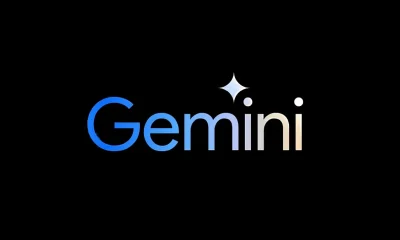Tech
Navigating the Play Store: Indian Apps Reinstated, but Challenges Linger

Tech
Google’s Gemini Chatbot Empowers Users with Enhanced Control Over Responses

Google has unveiled a groundbreaking enhancement for its AI-powered chatbot, Gemini, granting users unprecedented control over generated responses. This new feature allows for meticulous adjustments to specific segments of text, ushering in a new era of customization and precision. Users can now fine-tune responses, alter text length, or entirely excise sections with unparalleled ease, revolutionizing the way interactions unfold.
In a recent update, Google articulated the rationale behind this innovative addition, emphasizing the desire to empower users in their creative endeavors. Rather than overhauling entire responses, individuals can now iterate on nuanced elements, refining content to align more closely with their vision.
“We’re introducing a more refined method for tailoring Gemini’s responses. Initially available in English through the Gemini web app, users can pinpoint sections of text for modification, providing Gemini with instructions to generate output that better suits their needs,” Google stated in its Gemini release notes.
Following the generation of a response, users can select and highlight specific text segments. A pencil icon accompanied by the Gemini logo emerges adjacent to the highlighted area, signaling the availability of editing options. Hovering over the icon reveals the “Modify selected text” prompt, leading to four distinct editing choices: Regenerate, Shorter, Longer, and Remove, each tailored to address different editing needs.
The functionality of each option is clear-cut and purposeful. ‘Regenerate’ permits users to alter a segment of text, generating a fresh rendition. ‘Shorter’ and ‘Longer’ afford the ability to condense or expand the length of the text, respectively, facilitating seamless adjustments. Meanwhile, ‘Remove’ offers a straightforward solution for erasing selected text fragments. Furthermore, users possess the flexibility to append prompts, tailoring the modified text to their specific requirements.
This feature not only streamlines the editing process but also fosters a more dynamic and collaborative user experience. By offering granular control over responses, Gemini enables individuals to refine their communication in alignment with evolving preferences and objectives. Whether fine-tuning the tone, adjusting the narrative flow, or optimizing clarity, users wield newfound authority over their interactions with the chatbot.
Google’s commitment to enhancing user autonomy and fostering creativity underscores the company’s dedication to facilitating seamless digital experiences. With Gemini’s latest feature, the boundaries of possibility within AI-driven interactions expand, paving the way for more personalized and impactful exchanges. As technology continues to evolve, Google remains at the forefront, empowering users to shape their digital interactions with unprecedented precision and ease.
Tech
Unveiling Risks: Microsoft AI Engineer Exposes Concerns Over Copilot Designer’s Content Generation

In a recent revelation, Shane Jones, a Microsoft AI engineer, has raised serious concerns about the safety of the company’s AI image generator, Copilot Designer. Jones alleges that the tool lacks sufficient safeguards against generating inappropriate content, including violent or sexual imagery. Despite his prior warnings to Microsoft management, Jones claims no action was taken, prompting him to escalate the matter to the Federal Trade Commission and Microsoft’s board.
Jones, who identifies as a “principal software engineering manager,” disclosed his apprehensions in a letter published on LinkedIn. He highlighted internal awareness of systemic issues with Copilot Designer, citing instances where the tool produced potentially offensive and harmful images.
In response to these allegations, a Microsoft spokesperson refuted claims of negligence, emphasizing the presence of robust internal reporting channels for addressing AI-related issues. However, Jones has yet to respond to the spokesperson’s statement.
The crux of Jones’ concerns lies in Copilot Designer, powered by OpenAI’s DALL-E 3 system, which generates images based on textual prompts. He provided examples, including one where the prompt “car accident” resulted in an image of a scantily clad woman kneeling in front of a car. Such instances underscore broader anxieties within the generative AI field regarding the proliferation of harmful content.
Microsoft defended its stance by highlighting dedicated teams tasked with evaluating safety concerns and facilitating discussions with Jones through their Office of Responsible AI. They reiterated their commitment to addressing employee concerns in accordance with company policies.
Despite Microsoft’s efforts to promote Copilot as a revolutionary AI companion suitable for diverse applications, Jones argues that portraying it as universally safe is irresponsible. He asserts that Microsoft is overlooking widely acknowledged risks associated with the tool.
As the generative AI landscape continues to evolve rapidly, the incident serves as a cautionary tale regarding the importance of implementing robust safeguards against the misuse of AI technologies. Transparency and accountability are paramount to mitigate the dissemination of harmful content and uphold ethical standards in AI development and deployment.
In conclusion, Shane Jones’ disclosure sheds light on critical issues surrounding AI safety and underscores the imperative for industry stakeholders to prioritize responsible AI practices in their endeavors.
Tech
X Introduces “Articles” Feature: A Comprehensive Guide for Users

In a strategic maneuver, X, the platform formerly recognized as Twitter and now steered by Tesla CEO Elon Musk, has rolled out an innovative feature named “Articles.” This unveiling arrives amidst pivotal times for the microblogging platform, particularly amidst potential regulatory alterations within the European Union, notably under the Digital Markets Act.
The “Articles” feature marks a significant shift, enabling X users to share extensive content on the platform. Beyond the confines of limited characters, users can now seamlessly incorporate images, videos, GIFs, posts, links, and plain text within their articles. A recent official blog post elucidates that users are empowered to format their articles with a myriad of options, including headings, subheadings, bold, italics, strikethrough, indentation, numerical and bulleted lists.
Amongst the array of functionalities, the audience control feature stands out prominently. This functionality grants users the autonomy to dictate who can access their articles. While users can opt to share articles with the entire X community, they retain the flexibility to limit access to a specific audience, enhancing privacy and targeted dissemination.
How to Compose, Edit, and Delete Articles on X
For enthusiasts keen on delving into the Articles feature, here’s a comprehensive guide:
Composing Articles:
Navigate to the Articles tab via the side navigation panel.
Click on “Write” to commence crafting your article.
Upon completion, click on “Done” to publish the article, thereafter accessible on the Articles tab of your X profile.
Editing Articles:
Access the Articles tab to locate the desired article.
Tap on the three-dot menu and select “Edit Article.”
Confirm the edit, temporarily unpublishing the article.
Implement necessary modifications and republish the article.
Deleting Articles:
Within the Articles tab, choose the article slated for removal.
Click on the three-dot menu and opt for “Delete.”
The selected article will be swiftly removed from the platform.
It’s crucial to highlight that the Articles feature is exclusively accessible to X Premium+ users and verified organizations, introducing an additional layer of exclusivity to the long-form content-sharing experience on the platform.
In essence, X’s introduction of the “Articles” feature represents a paradigm shift, fostering a more expansive and dynamic avenue for user expression and engagement. As users navigate through this novel terrain, equipped with comprehensive guidelines, the potential for enriched interaction and content dissemination on X appears boundless
-

 Sports2 months ago
Sports2 months agoUnraveling the Challenge: IND vs ENG in Dharamsala – Rohit Sharma and Ben Stokes Contemplate Pitch Dynamics and Conditions
-

 Fashion2 months ago
Fashion2 months agoFashionable Highlights from Anant Ambani and Radhika Merchant’s Pre-Wedding Finale
-

 Featured2 months ago
Featured2 months agoDharamsala weather update, IND vs ENG: Will rain play spoilsport in India vs England 5th Test? Dharamsala weather update, IND vs ENG: Dipping temperatures, rain and sleet could play spoilsport at the HPCA Stadium during the fifth Test between India and England from Thursday.
-

 Entertainment2 months ago
Entertainment2 months agoShah Rukh Khan greets guests with Jai Shree Ram ‘for good measure’ at Ambani pre-wedding bash, turns host.
-

 Fashion2 months ago
Fashion2 months agoMonica Lewinsky Transforms Career Path, Embraces Modeling for Sustainable Fashion
-

 Featured2 months ago
Featured2 months agoByju’s CEO Raveendran says unable to pay salaries, lambasts investors for blocking funds
-

 Sports2 months ago
Sports2 months ago‘World’s shortest retirement’: Pat Cummins responds to prospect of Neil Wagner returning for 2nd NZ vs AUS Test
-

 Business2 months ago
Business2 months agoBhavish Aggarwal: Steering Ola Cabs from Vision to Victory














